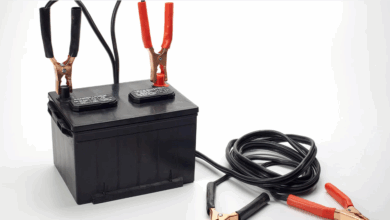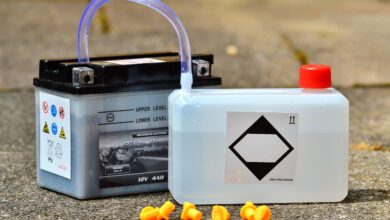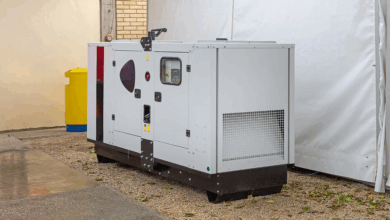Your Guide to Buying the Best Home Backup Generator

Okay, here is a 1000-word article about buying the best home backup generator, including FAQs and a conclusion.
Your Guide to Buying the Best Home Backup Generator: Powering Through Outages
Power outages are more than just an inconvenience; they can disrupt daily life, compromise safety, spoil food, and even interrupt essential medical equipment. In an increasingly unpredictable world, having a reliable source of backup power for your home is becoming less of a luxury and more of a necessity. A home backup generator can provide the peace of mind and functionality you need when the grid goes down.
But with various types, sizes, and features available, choosing the best generator for your home can feel overwhelming. This guide will walk you through the essential factors to consider, helping you make an informed decision to keep the lights on, the heat running, and your life as normal as possible during an outage.
Why You Need a Home Backup Generator
Think about what happens when the power goes out:
- Loss of Essentials: Lights, heating/cooling, refrigeration, internet, sump pumps, and security systems all cease to function.
- Spoiled Food and Medications: Refrigerators and freezers stop working, leading to potentially significant financial loss.
- Safety Concerns: Navigating in the dark is hazardous. Security systems are offline.
- Work and Communication Disruption: Many people rely on power for remote work and staying connected.
- Medical Needs: Power is often critical for medical devices like oxygen concentrators or mobility aids.
A backup generator addresses these issues, providing continuity and safety.
Types of Home Backup Generators
There are two primary types of home backup generators:
-
Portable Generators:
- Description: These are typically smaller, wheeled units that you can move around. They run on gasoline, propane, or sometimes dual fuel. They usually require manual start-up and the use of extension cords to power specific appliances, or connection via a transfer switch to power selected circuits.
- Pros: Lower initial cost, portable (can be used elsewhere, like job sites or camping), relatively easy to set up for basic use.
- Cons: Require manual starting, need refueling (often frequently during long outages), can be very noisy, produce exhaust fumes requiring careful placement, less power capacity than standby units.
- Standby Generators:
- Description: These are permanently installed units, similar in appearance to an outdoor air conditioning unit, often running on natural gas or propane supplied directly from your utility or a large tank. They are connected directly to your home’s electrical system via an automatic transfer switch (ATS).
- Pros: Automatic operation (turn on within seconds of an outage), power significant portions or even your entire home, cleaner and more consistent fuel supply (natural gas/propane), quieter operation than most portables, integrated seamlessly with your home.
- Cons: Higher initial cost, requires professional installation (electrical, gas, permits), not portable.
Key Factors to Consider When Buying
Choosing the best generator isn’t about finding a single "best" model for everyone, but finding the best one for your specific needs and circumstances.
-
Power Needs (Sizing is CRITICAL): This is arguably the most important step. You need to determine exactly what you want to power during an outage.
- Essentials Only: Just lights, refrigerator, perhaps a fan or a few outlets.
- Comfort Level: Essentials plus furnace fan, well pump, microwave, TV, etc.
- Whole House: Powering virtually everything as if the grid were still on.
- How to Calculate:
- List every appliance, light, and device you want to run simultaneously.
- Find the running watts (also called rated watts) for each item (usually on a label or in the manual). Add these up.
- Identify items with electric motors (refrigerators, freezers, pumps, AC units, furnace fans). These require significantly more power to start (starting watts or surge watts) than to run. Add the highest single starting watt requirement from your list to your total running watts. Don’t add the starting watts for all motors, just the largest one you might start while other things are running.
- This total gives you a good estimate of the minimum running watts your generator needs, plus some cushion for starting surges. It’s always better to slightly oversize than undersize. Many manufacturers offer sizing calculators online.
-
Fuel Type:
- Gasoline: Widely available, but stores poorly (ethanol can damage engines), flammable, requires frequent refueling, produces more emissions. Good for infrequent, short-term use with portables.
- Propane: Stores indefinitely, cleaner burning, safer to store than gasoline, delivers slightly less power than gasoline for the same engine size. Excellent for both portable and standby units. Requires a tank.
- Natural Gas: Unlimited supply (if connected to your home), cleanest burning, no refueling needed. Delivers less power than gasoline or propane for the same engine size. Only for standby units with a natural gas connection.
- Diesel: Most fuel-efficient, long shelf life (with additives), durable engines, provides consistent power. More expensive fuel, requires a large tank, louder, stronger odor, can gell in cold weather. Primarily for very large residential or commercial systems.
- Dual Fuel: Some portable generators can run on either gasoline or propane, offering flexibility.
-
Automatic Transfer Switch (ATS):
- Function: The ATS is the brain of a standby generator system. It constantly monitors the incoming utility power. When power is lost, the ATS signals the generator to start. Once the generator is ready, the ATS safely disconnects your home from the utility grid and connects it to the generator. When utility power is restored, the ATS switches your home back to the grid and tells the generator to shut down.
- Safety: An ATS is crucial because it prevents "backfeeding" – sending power back onto utility lines, which is extremely dangerous for utility workers.
- Convenience: It makes the system completely automatic. For portable generators powering circuits via an inlet box, a manual transfer switch (MTS) or interlock kit is necessary for similar safety, but requires manual operation. For portables just using extension cords, no transfer switch is involved.
-
Noise Level: Generators can be loud, measured in decibels (dB). Portable generators are generally louder (65-85+ dB) than standby units (50-70 dB). Consider local noise ordinances and the proximity to neighbors. Quieter inverter generators (a type of portable) are also available.
-
Budget: Costs vary significantly. Portable generators can range from a few hundred to a couple of thousand dollars. Standby generators, including professional installation (unit cost + electrical work + gas line + permits), can range from $5,000 to $20,000 or more depending on size and complexity. Remember to factor in fuel costs and periodic maintenance.
-
Installation Requirements: Portable generators require proper outdoor placement away from windows and doors due to exhaust fumes. Standby generators require professional installation involving electrical and gas work, often requiring permits. Location must comply with setback requirements and ventilation needs.
- Maintenance: Like any engine, generators require regular maintenance (oil changes, filter replacement, battery checks for standby units, fuel stabilizers for portables). Standby generators perform weekly self-tests. Proper maintenance is essential for reliable operation.
Choosing the Right Generator for You
- For occasional, short outages or minimal needs: A portable generator might suffice. Carefully calculate your power needs and invest in a quality unit with enough wattage. Consider a dual-fuel or inverter model for added flexibility or quieter operation. Invest in a transfer switch or interlock kit for safer connection to your home’s circuits.
- For frequent or long-duration outages, significant power needs, or maximum convenience: A standby generator is the better investment. It provides automatic, seamless power to large portions or your entire home and uses a reliable fuel source like natural gas or propane.
Installation and Safety
Regardless of the type, never run a generator indoors or in an attached garage. Carbon monoxide is a deadly, odorless gas. Ensure proper ventilation and placement outdoors, far from windows and doors.
For standby generators, always use a qualified, licensed electrician and gas fitter for installation. This ensures safety, compliance with codes, and proper operation of the transfer switch.
Cost Breakdown
The cost of owning a generator includes:
- Purchase Price: Varies widely by type, size, and features.
- Installation Costs: Significant for standby units, minimal for portables (unless installing a transfer switch).
- Fuel Costs: Ongoing expense during operation.
- Maintenance Costs: Periodic checks and service.
FAQs
- How do I accurately calculate my power needs? List all items you want to run simultaneously. Add their running watts. Add the highest starting watt of one motor-driven appliance from that list. This total is your minimum required running wattage. Use online generator sizing calculators as a helpful tool.
- What’s the difference between running watts and starting watts? Running watts is the power needed to keep an appliance operating. Starting watts (or surge watts) is the brief, higher burst of power needed to start an electric motor.
- Can I install a standby generator myself? No. Standby generator installation involves complex electrical and gas work that must be done by licensed professionals to ensure safety and compliance with building codes and warranty requirements.
- How long can a generator run continuously? Portable generators run until their fuel tank is empty (typically 8-12 hours depending on load and tank size). Standby generators running on natural gas can run indefinitely as long as the gas supply is active. Propane standby generators run until the tank is depleted. It’s generally recommended to shut generators down periodically for checks and refueling (if applicable).
- Are permits needed for a generator? Yes, typically permits are required for standby generator installation due to the electrical and gas connections and placement requirements. Portable generators usually do not require permits unless connected via a transfer switch.
- What kind of maintenance is required? Regular checks of oil level, air filter, and battery (for standby units). Standby units often perform automatic weekly tests. Portable units need fuel stabilization if storing gas, and periodic engine starts. Refer to the owner’s manual for specific schedules.
Conclusion
Investing in a home backup generator is an investment in your safety, comfort, and peace of mind during power outages. By understanding the different types, accurately assessing your power needs, considering fuel options, and factoring in installation and safety, you can choose the best generator to protect your home and family when the lights go out. Take the time to research, calculate your needs carefully, and consult with professionals, especially for standby installations, to ensure you select the right solution for reliable backup power.




![How to Bypass CO Sensor on Generator – [4-Step Safety Guide]](https://www.generator411.com/wp-content/uploads/2025/08/co-sensor-on-generator-390x220.png)